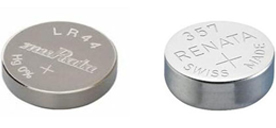Lithium Iron Phosphate Battery (LiFePO₄): Working & Advantages
2024/11/18 14:28:37
Views:
lithium iron phosphate battery lifepo4, Some refer to it as lithium ion iron phosphate battery. Compared to traditional lithium batteries, it offers clear advantages in safety, longevity, and cost-effectiveness. This article covers its working principle, key features, applications, and how to choose the right battery.
- what is a lithium iron phosphate battery?
- How do Lithium Iron Phosphate Batteries Work?
- Key features and specifications
- lithium iron phosphate battery Advantages
- lithium iron phosphate battery Applications
- Lithium Iron Phosphate Batteries vs Other Lithium-Ion and Lead-Acid
- How to charge lithium iron phosphate battery
what is a lithium iron phosphate battery?
The lithium iron phosphate battery (LFP battery) is a lithium ion battery in which lithium iron phosphate (LiFePO₄) is positive and graphite is negative. Compared with traditional lithium cobaltate, nickel-cobalt-manganese (NCM), and nickel-cobalt-aluminum (NCA) batteries, lithium iron phosphate batteries have higher safety, life, and environmental benefits. It has become the preferred solution for electric vehicles, grid energy storage systems, and portable devices.
How do Lithium Iron Phosphate Batteries Work?
To understand the working principle of lithium-iron-phosphorus batteries, you first need to understand the basic principle of lithium-ion batteries. Lithium-iron-phosphorus (LFP) batteries store and release electrical energy inside the battery through an electrochemical reaction.
Charging process:
When the battery is charged, an external power supply provides current, injecting electrons into the anode (graphite) of the battery. At the same time, lithium ions migrate from the cathode (lithium iron phosphate) to the anode to maintain charge balance. As the lithium ions migrate, the battery's state of charge (SOC) increases, indicating that the battery is storing energy.
Discharge process:
During the discharge, lithium ions are released from the negative electrode (graphite) and migrate through the electrolyte to the positive electrode (LiFePO₄). At the same time, electrons flow from the negative electrode to the external circuit to power the device. As the lithium ions gradually return to the cathode, the battery's power is gradually consumed until the discharge ends.

Charge and discharge process of lithium iron phosphate battery
Internal Structure
Cathode: Composed of lithium iron phosphate (LiFePO₄), It has strong heat resistance to ensure safety and durability during long-term use.
Anode: Made of graphite, this material efficiently stores and releases lithium ions in the charge-discharge cycle.
Electrolyte: Chemicals similar to LiPF6 help lithium ions flow freely from one electrode to another during the charging and discharging process of the battery.
Diaphragm: Made of materials such as polyethylene or polypropylene, the main role is to prevent direct contact between positive and negative electrodes, thereby avoiding short circuit, while allowing lithium ions to pass smoothly during charging and discharging.
Collector: The anode uses copper, the cathode uses aluminum material, responsible for the transfer of electrons to the external circuit.

Internal structure diagram of lithium iron phosphate battery
Key features and specifications
size: 100mm–300mm (length) x 50mm–100mm (width) x 20mm–100mm (height).
Weight: 50g to 10kg (100Ah battery pack typically weighs 25–30kg).
Common Models: 18650, 26650, and 32650 cylindrical cells, as well as prismatic and pouch cell battery packs.
Nominal Voltage: 3.2V (LiFePO₄), 3.6V for other lithium batteries.
Fully Charged Voltage: 3.6V–3.65V (LiFePO₄), about 4.2V for other lithium batteries.
Discharge Voltage: 2.5V–2.8V (depending on battery type).
Capacity Range: 1000mAh to 300Ah+.
Energy Density: 90–120 Wh/kg (LiFePO₄; higher for other lithium chemistries).
Cycle Life: 2000-5000 charge and discharge cycles.
Charge Rate: 0.5C to 1C.
Discharge Rate: Up to 3C or higher.
Self-discharge Rate: 2%–3% per month.
Safety Features: Low thermal runaway risk, with overcharge, overdischarge, and short-circuit protection.
Operating Temperature Range:
Charging Temperature: 0°C to 45°C
Discharge Temperature: -20°C to 60°C
lithium iron phosphate battery Advantages
Excellent safety: lithium-iron-phosphorus batteries have excellent thermal stability, which greatly reduces the risk of battery loss of control, fire or explosion due to overheating. Safer than other lithium battery types (such as lithium cobaltate) and suitable for high temperature or high pressure environments.
Very long life: lithium-iron phosphate batteries' cycle life is usually more than 2000 times, far more than other lithium battery types, which means that you can reduce the frequency of battery replacement, and reduce the cost of long-term use.
Excellent power transmission: LiFePO₄ batteries excel in providing reliable and continuous energy, ensuring that equipment requiring continuous power can operate smoothly for long periods of time without compromising performance.
Strong environmental protection: Unlike traditional lithium batteries containing cobalt and nickel, lithium iron phosphate batteries do not contain harmful metals, the recycling process is simple, environmentally friendly, and in line with the trend of sustainable development and green energy.
Low temperature resistance: Even at low temperatures, lithium iron phosphate batteries can maintain good charge and discharge performance, which is very suitable for electric vehicles or backup power systems in cold areas.
Cost-effectiveness: Compared with other lithium batteries, lithium iron phosphate lfp batteries have lower raw material costs, and more economical manufacturing costs, and are suitable for large-scale applications, especially in the field of electric vehicles and energy storage.
lithium iron phosphate battery Applications
Electric vehicles (EVs) and electric buses: deliver long life and enhanced safety, suitable for commercial and mid-to-low-end electric vehicles.
Renewable energy storage: Used in solar and wind energy systems to support deep discharge and ensure a stable energy supply.
Power tools and portable equipment: High energy efficiency and short charging cycle, improve tool performance, widely used in power tools and portable power supplies.
UPS systems: Replace lead-acid batteries and provide high reliability for places that require uninterruptible power, such as data centers.
Drones and Aerospace: Long endurance and high safety, suitable for long flights and extreme environments.
Electric ships and motorcycles: green, reduce the cost of use, and are suitable for electric ships and motorcycles.
Electric forklifts and logistics equipment: high efficiency, low operation and maintenance costs, widely used in warehousing and logistics equipment.
Smart grid energy storage: Optimize power distribution to support a stable supply of renewable energy.
Wearable devices: Low power consumption, high security, suitable for smart watches and health monitoring devices.
Portable energy: Used for emergency power and travel equipment to provide stable power support.
Lithium Iron Phosphate Batteries vs Other Lithium-Ion and Lead-Acid
When choosing a battery, lithium iron phosphate (LiFePO₄) has advantages and disadvantages with other types of lithium batteries (such as NMC, LCO) and traditional lead-acid batteries. Next, the safety, energy density and service life of these batteries will be compared so that you can make the best choice for your needs.
Lithium iron phosphate battery vs NMC battery
The Key differences between LiFePO₄ (lithium iron phosphate) and NMC (Nickel Cobalt Manganese Lithium Battery) are safety and energy density. Due to its high chemical stability, lithium iron phosphate batteries are not prone to thermal runaway or fire, and are suitable for scenarios requiring high safety and long-term use, such as electric vehicles (EVs) and energy storage systems. In contrast, NMC batteries have a higher energy density and can store more electrical energy in the same volume and weight, which makes NMC batteries more suitable for applications with strict space and weight requirements, such as high-performance electric vehicles (such as Tesla) and portable electronic devices. If safety and long-term durability are priorities, choose LiFePO₄; If you focus on high energy density and compact design, NMC is more suitable.
Lithium iron phosphate battery vs LCO battery
LCO (lithium cobalt oxide battery) is better than LiFePO₄ in energy density, so it is widely used in smartphones, laptops, and other devices that have strict requirements on battery size and weight. However, the chemical stability of LCO batteries is poor, they are prone to thermal runaway or explosion under extreme conditions, and their safety is poor. In contrast, LiFePO₄ batteries are much safer than LCO and have a longer cycle life. The LiFePO₄ battery has a longer life, making it ideal for long-term use in systems such as energy storage and power tools. In summary, the LiFePO₄ is more suitable for users with high requirements for safety and cycle life, while the LCO is suitable for small electronic devices with high energy density.
Lithium iron phosphate battery vs Lead-Acid battery
Lead-acid batteries are low-cost but have low energy density, heavy volume, and short cycle life (300-500 cycles). In contrast, lithium iron phosphate batteries provide a higher energy density, up to 2,000 + cycles of service life, suitable for frequent charge and discharge applications (such as electric vehicles, and energy storage systems). In addition, lead-acid batteries contain harmful substances, and recycling is difficult, polluting the environment; lithium iron phosphate batteries are non-toxic, environmentally friendly, and easy to recycle. Therefore, although lead-acid batteries are cheap at the beginning, lithium iron phosphate batteries have more advantages in terms of long-term economy and environmental protection.
Table comparing the performance of lithium iron phosphate batteries with other batteries
How to charge lithium iron phosphate battery
Correct charging method:
The maximum charging voltage of lithium iron phosphate batteries is 3.65V, and the charging current is recommended to be 0.5C to 1C (for example, 100Ah batteries use 50A to 100A current). Make sure the charger supports these parameters to avoid overcharging and ensure the long-term safety and stability of the battery.
Choose the right charger:
Use a charger designed for lithium iron phosphate batteries with overcharge, overdischarge, short circuit and temperature control protection. Make sure the voltage range and charging current of the charger match the specifications of the battery.
Power monitoring:
The state of charge (SOC) of the battery is monitored through a voltage or battery management system (BMS). When the battery voltage is lower than 3.2V, it needs to be charged, and avoid discharging below 3.0V to protect battery performance and extend service life.
Frequently Asked Questions(FAQ):
Q1: Do lithium iron phosphate batteries need to be vented?
No, LFP battery do not need to be vented.
Q2: Are lithium iron phosphate batteries safe?
Yes, LFP batteries are very safe. They are more stable than other lithium-ion batteries, reducing the risk of overheating, thermal runaway, and fire.
Q3: How are lithium iron phosphate batteries made?
LiFePO₄ battery are made from lithium iron phosphate cathodes, graphite anodes, and a liquid electrolyte, which are assembled into cells and then into battery packs.
Q4: How long do lithium iron phosphate batteries last?
Lithium iron phosphate (LiFePO₄) batteries have a charge cycle of 2,000 to 5,000 cycles, equivalent to 5 to 10 years of use.
Q5: Why are lithium iron phosphate batteries so expensive?
The reason is the high cost of raw materials such as lithium and iron phosphate and the complex manufacturing process.
Q6: Where to buy lithium iron phosphate battery?
You can buy lithium iron phosphate (LFP) batteries from online retailers, specialized battery suppliers, or stores selling EV components and renewable energy products.
Q7: lithium iron phosphate battery manufacturers
Key lithium iron phosphate (LiFePO₄) battery manufacturers include Gotion High-Tech, CATL, BYD, A123 Systems, PEVE (Pioneer Everlast Power Energy), CALB (China Aviation Lithium Battery Co.), Lithium Storage, and Kokam, with a focus on electric vehicles and energy storage.
Related Information
-
-
Phone
+86 135 3401 3447 -
Whatsapp





